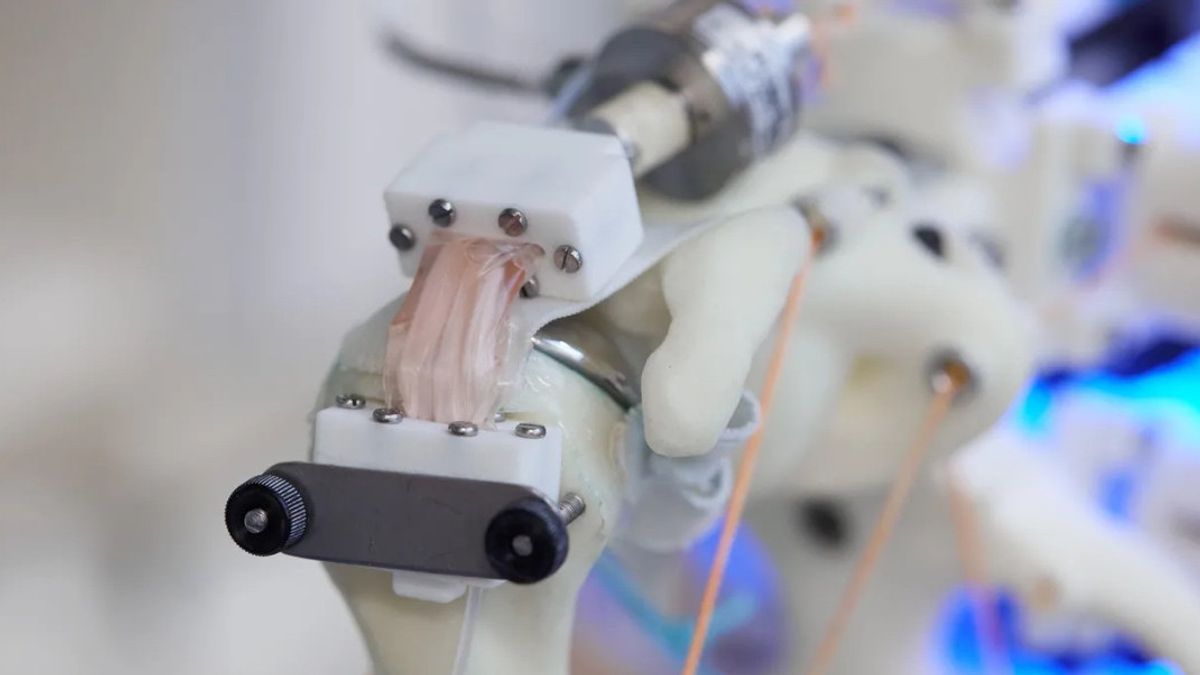
JAKARTA - Scientists have just grown human cells in a robot, which they claim could be used for the treatment of various tissue grafts. However, these cells need the right environment and stimulation.
In the scientists' research, the robot's body was able to provide tendon cells with the same kind of stretching and twisting they would experience in a human body.
Scientists from the University of Oxford and robotics company Devanthro think that if you want to grow materials that are designed to move and flex like tendons or muscles, it would be best to recreate their natural growth environment as accurately as possible.
So they decided to opt for a moving human body. Growing cells in humans is actually a lot of trouble, so scientists decided to best estimate the human musculoskeletal system using robots.
As described in a paper published in Nature Communications Engineering, they adapted an open-source robotic framework designed by engineers at Devanthro and created a custom growth environment for cells that could be attached to the frame, so that they could be bent and flexed as needed.
That environment is known as a bioreactor. The part they chose to grow this tissue on is the robot's shoulder joint, which had to be upgraded to make it more accurate for predicting human movement.
Then, they created a bioreactor that could be attached to the robot's shoulder, consisting of a string of biodegradable filaments. The hair-like filaments are then made like human cells and the chamber is flooded with a nutrient-rich fluid designed to promote growth.
The cells grew over a two-week period during which they enjoyed a daily exercise routine. For 30 minutes each day, the bioreactor was placed on the robot's shoulder and moved. However, they weren't really sure if the change was any good.
The project's lead researcher, Pierre-Alexis Mouthuy of Oxford University's Botnar Institute of Musculoskeletal Science, said the differences he and his colleagues observed in cells grown this way were based on measurements of the activity and growth of certain genes.
“We get a difference in the loading regime (movement of the bioreactor in the shoulder joint of the robot) but does that difference mean better cells? We don't know yet. We're not saying this system is better than the others. Or there are certain moves that are better than others. We're just showing the feasibility," said Mouthuy as quoted by The Verge, Friday, May 27.
Scientists believe it is possible to grow cells in robotic skeletons. Now, they just needed to find out if it was workable. According to them, in the future, detailed scans of patients could be used to create perfect joint replications of their bodies, where tissues such as tendons could be created for surgery in human simulacra.
"We need to do more work to understand what's really going on," Mouthuy said.
The English, Chinese, Japanese, Arabic, and French versions are automatically generated by the AI. So there may still be inaccuracies in translating, please always see Indonesian as our main language. (system supported by DigitalSiber.id)








